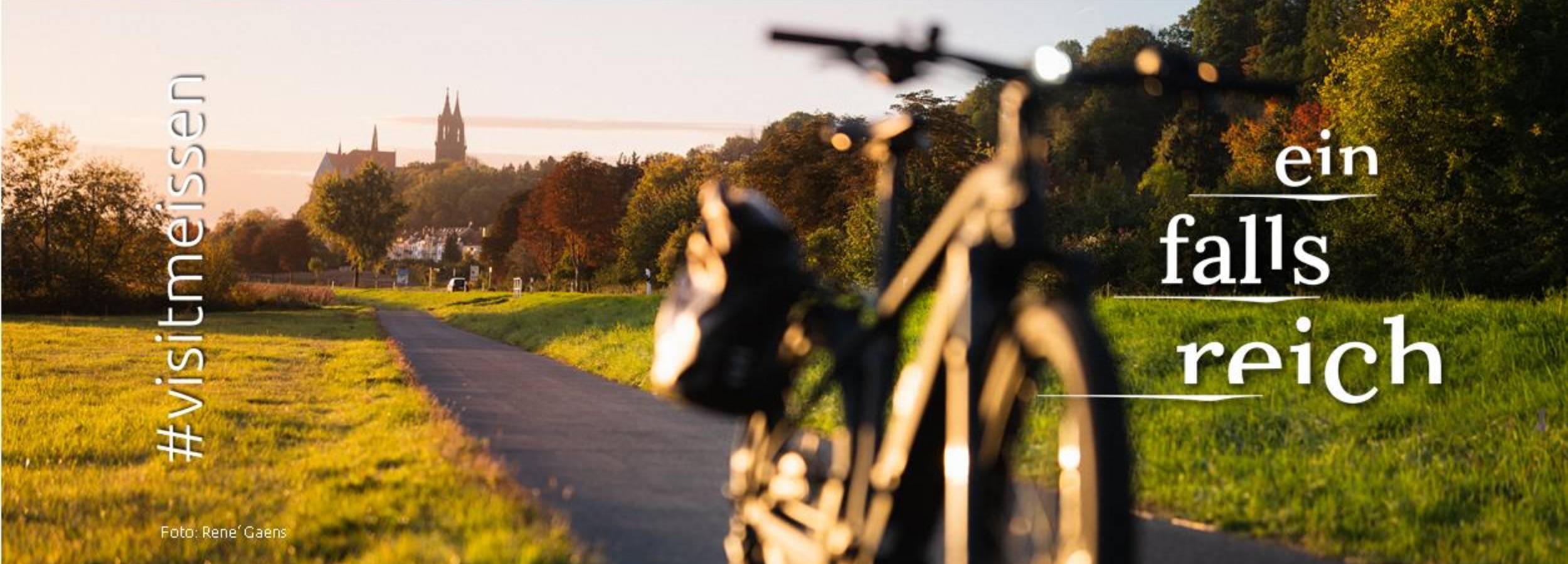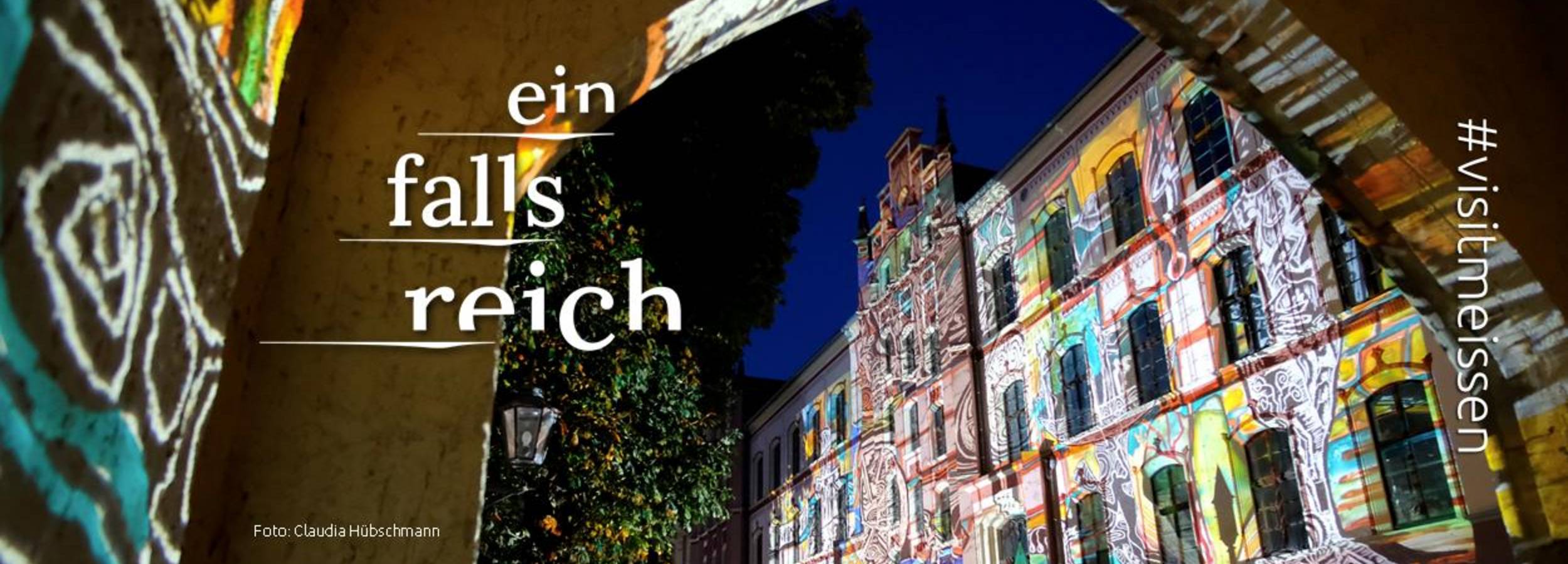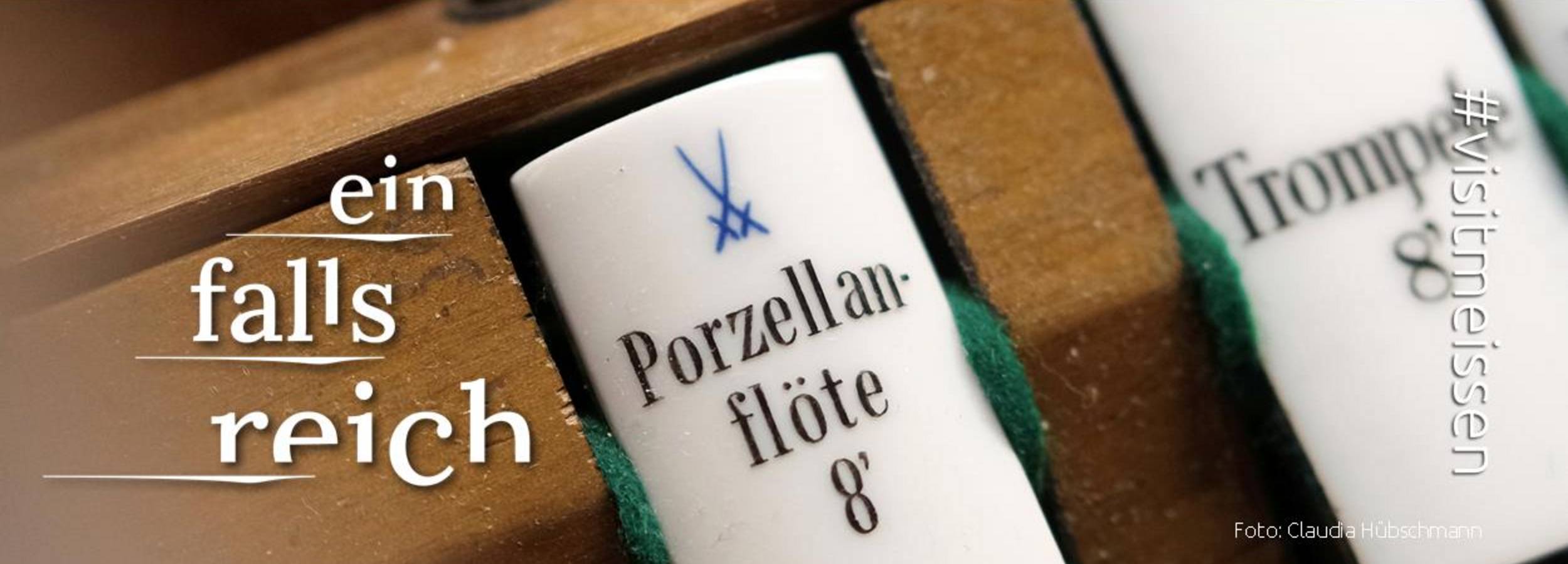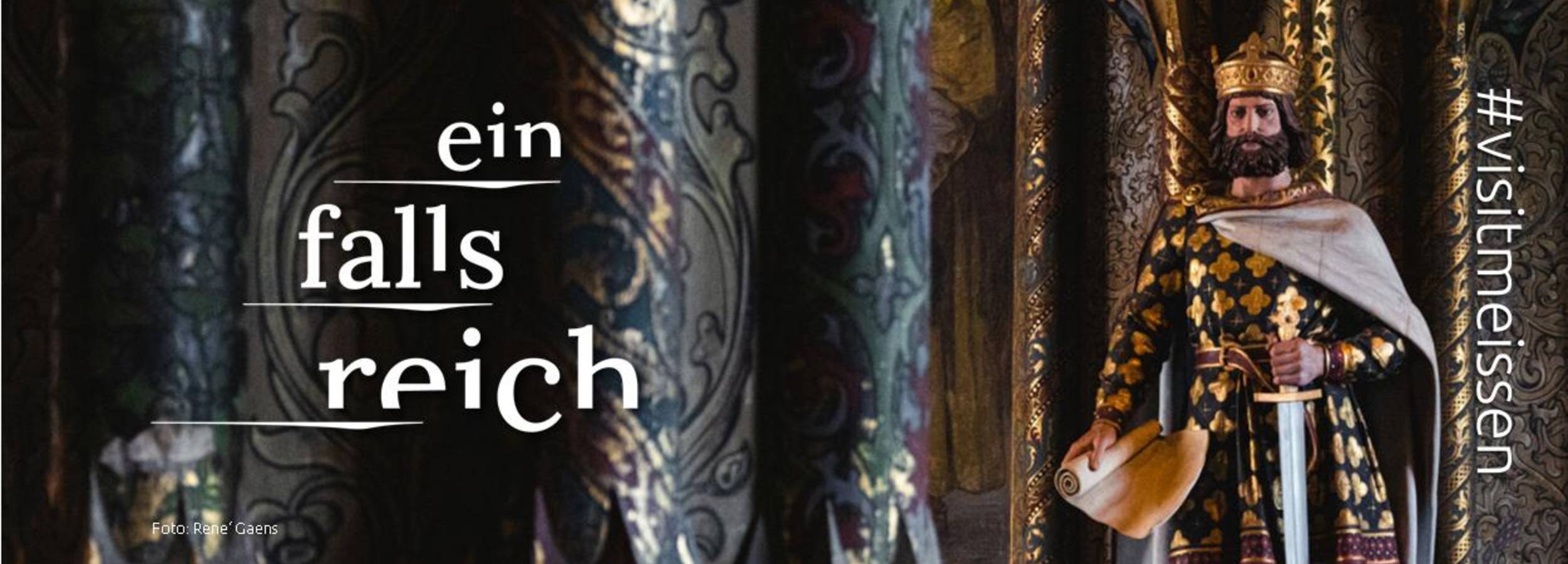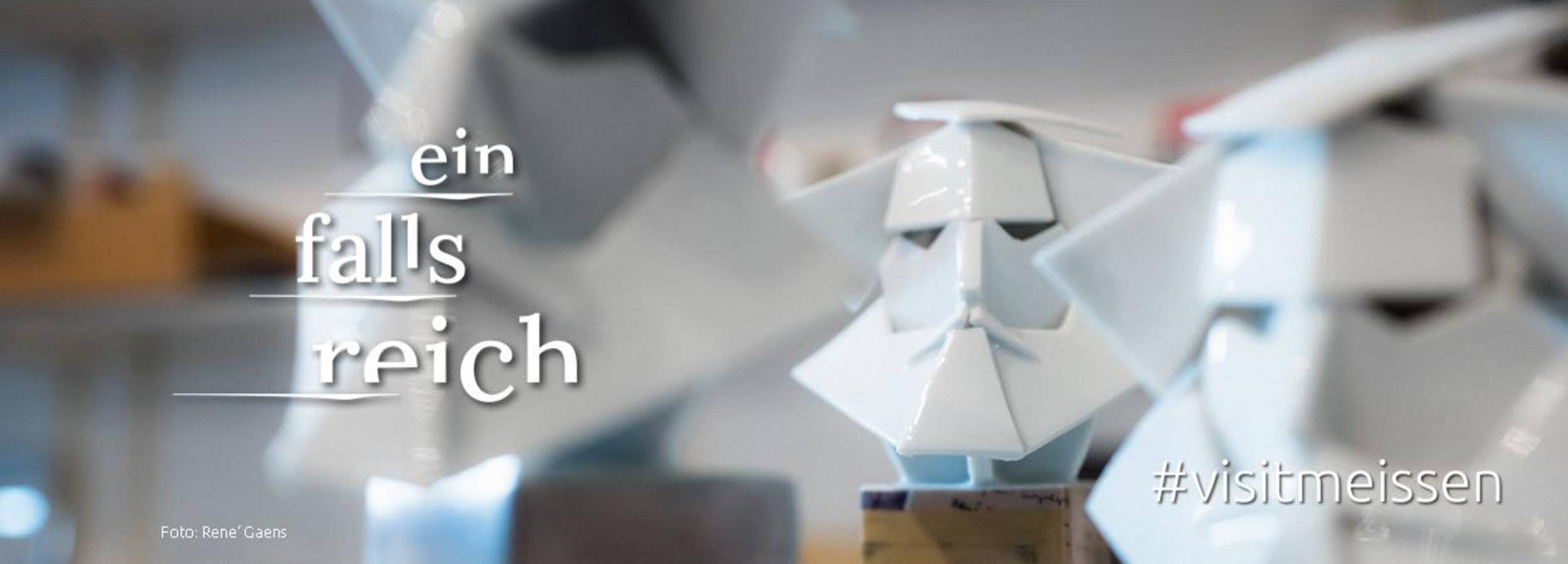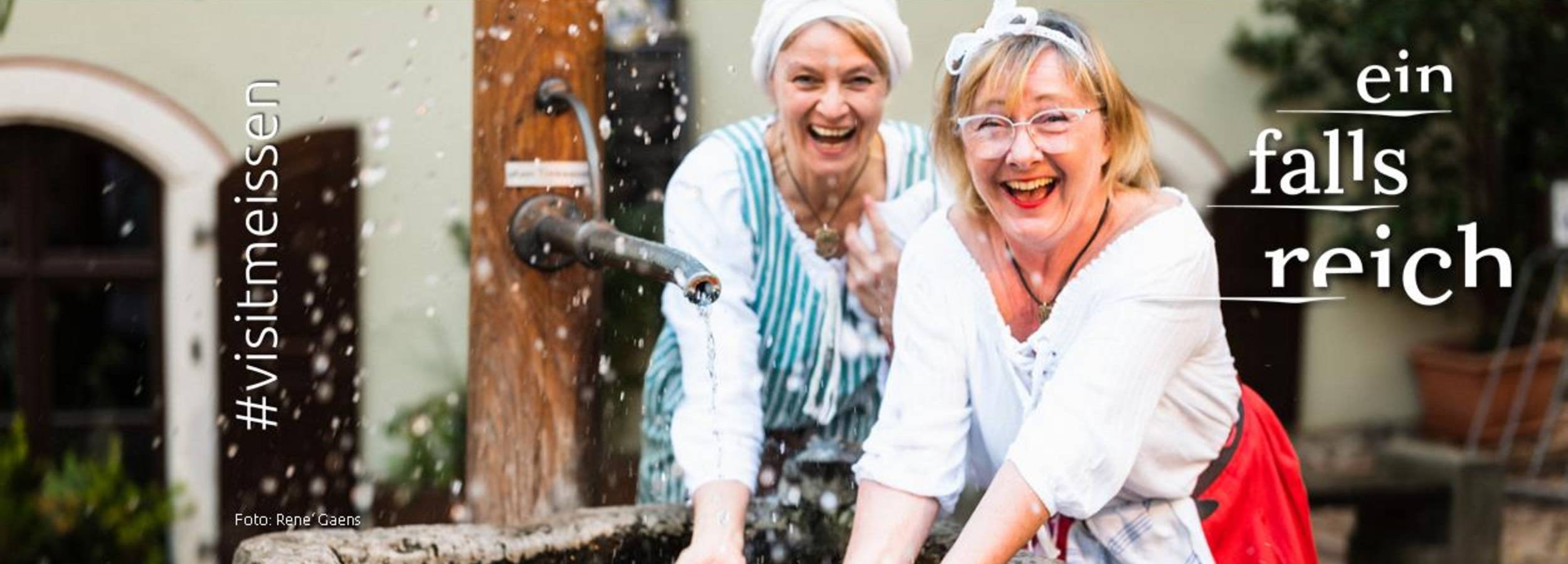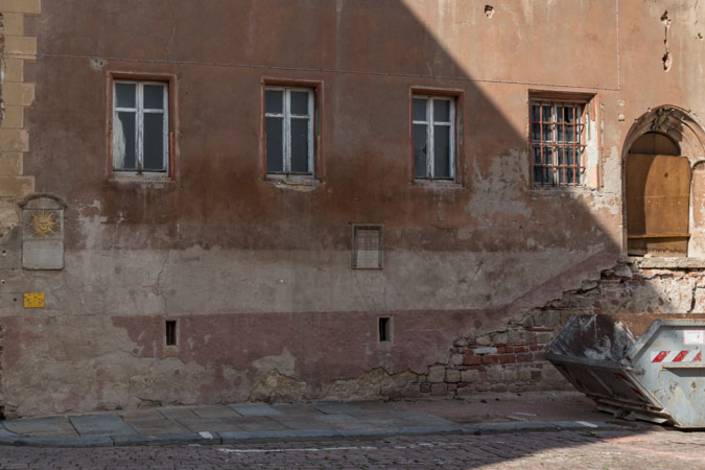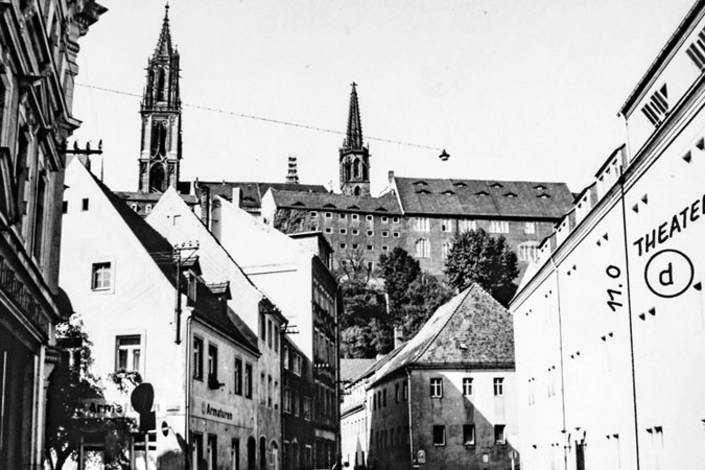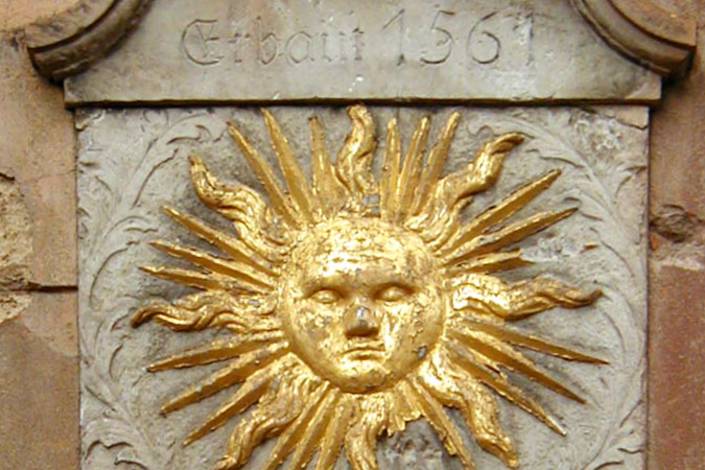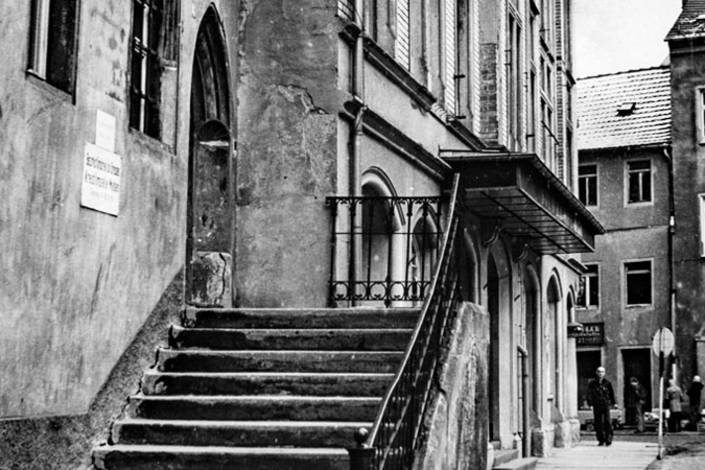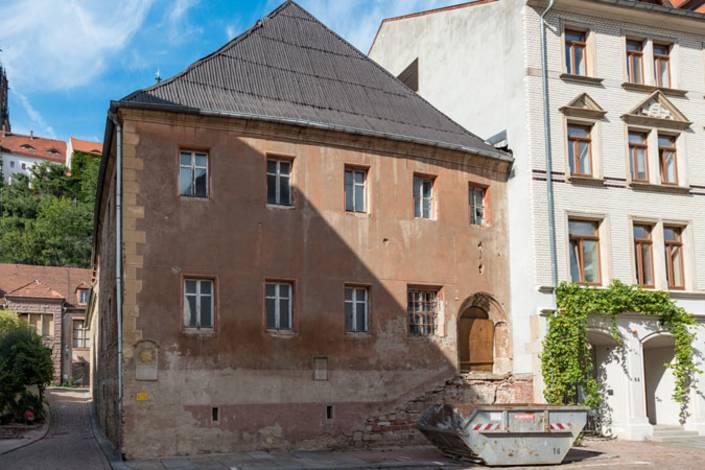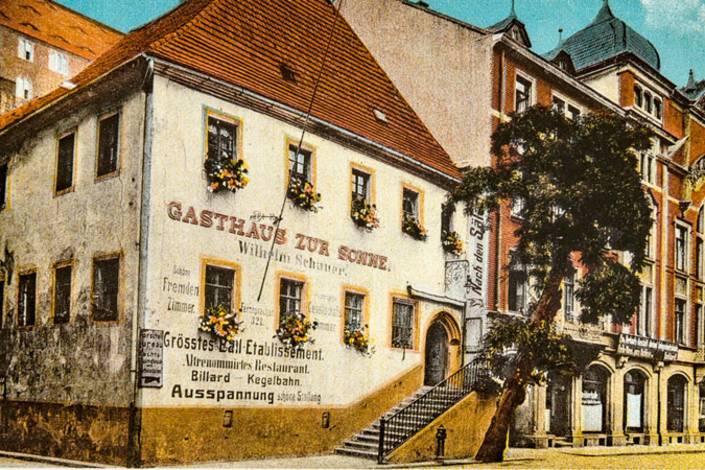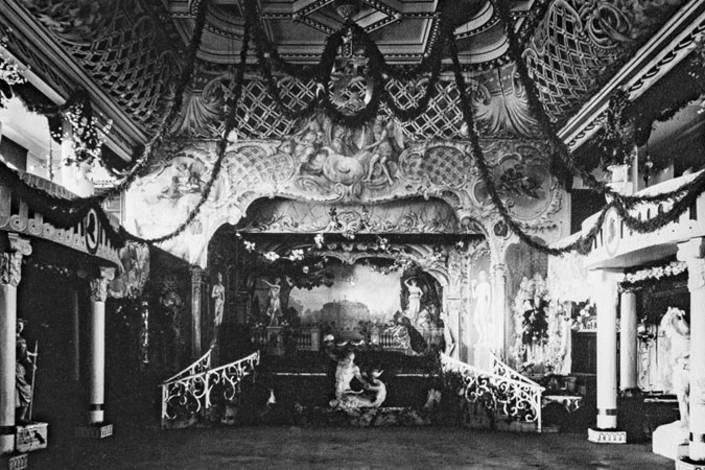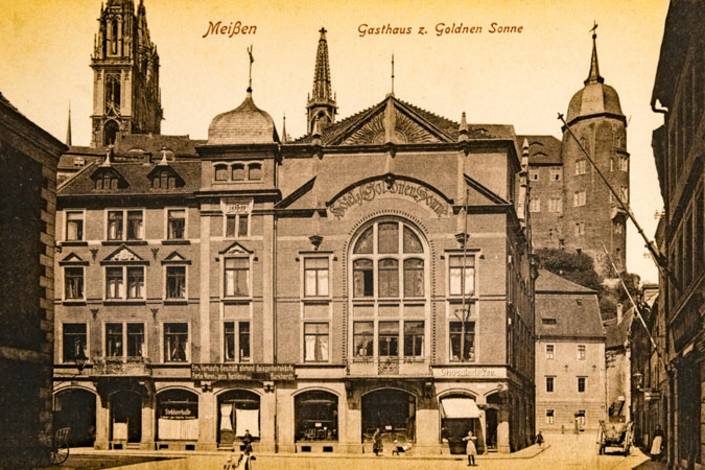Historical, heritage value & special features:
At the time the town of Meissen was founded (around 1200), today's Theaterplatz was still in the basin of Meissen's Elbe harbour, which was documented in 968. The land immediately bordering the harbour basin was under the control of the bishop. According to what we know from later sources, the Bishop's Brewery was located on the site of the Golden Sun Inn (Gasthof zur Goldenen Sonne), which is still standing today. The cellar vaults there, which are offset in height, may originate from the brewery. In any case, they date back to a predecessor building. The building now known as the "Golden Sun" is all that remains of what was once a larger building complex. This comprised the Renaissance building, a Baroque extension behind it with floors at different levels, an outbuilding adjoining that at right angles, a large courtyard and at least three other smaller buildings. The tree still pictured in the oldest photos in front of the flight of steps to the main building is marked on the town map of 1830.
According to the inscription on the seating niche portal, the main building dates back to 1561 in its surviving form. In the 16th century, councillor Jacob Stolle owned this inn, then called "Gasthof beim Gewandhause". A "dance house" is mentioned on this site in 1597. In 1610, the property was enlarged with the purchase of a neighbouring property and, after a fire in 1705, a new building was erected. This was possibly the building that once stood to the right of it. On 1 January 1852, a larger hall was opened in the Golden Sun Inn, created by combining three rooms as well as the upper floor. This made the "Sonne" the first inn with a large hall, which became a social hub. This is also shown in a depiction of the interior of the hall during the celebration of the "Scheibenschützen zur Königswürde" by publisher F. A. Brück in 1852.
In 1898/99, the part of the inn adjoining the Renaissance building to the east and the other neighbouring buildings were demolished and a much larger new hall with an extension was built – at that time the largest hall in Meissen and the surrounding area. Beginning in 1918, films were also screened here. The inn's entrance portal was located to the right of the flight of steps leading up to the Renaissance building, until these were demolished. The house emblem and the memorial plaque to the poet De la Motte Fouque were also embedded in this façade, and have been at their present location only since 1899.
The house panel with the sun contains the building history in short form. The text reads: "Built in 1561 / After I, for twenty-seven years / Had been a pile of ashes / I was, by the gracious hand of God / Then returned to this state / Johann Jacobi Musicus / Instrumentalis / Anno Christi MDCCV / Dominus Protectio mea".
The Renaissance section has very beautiful profiled wooden beam ceilings with sloping insert boards – a style not often seen in Meissen. In the interior, a great deal of detail has been preserved, including wall cupboards, niches, corbels and arches. The roof truss, which is hipped on all sides and dates back to the time of original construction (1561), is another special feature. Evidence of the above-mentioned large hall, created in 1821, can be seen in the adjacent part of the building behind it, which can be reached from the mezzanine floor of the front building via a staircase. Here, there is still some evidence of the rich design of the interior walls.
Development up to reunification:
From 11 October 1918, Max Krebs held cinematic screenings in the large hall of the Golden Sun under the title "Kammerlichtspiele". In 1935, the building was converted for use exclusively as a cinema. In 1953, the cinema was remodelled and reopened under the name "Domtheater". For political reasons, the cinema was renamed "Filmbühne der Werktätigen" (workers' film stage) in December of the same year. The cinema exit was via the Renaissance building, in which a gastronomy establishment also operated.
In 1988, the large hall had to be closed for fire safety reasons. Scaffolding was still in place in 1989, but the work was never completed.
Development after reunification:
In 1991, the entire cinema, including the studio cinema and café, was closed. At that time, the entire complex belonged to Kino GmbH i.A., (formerly Bezirkslichtspieldirektion).
In 1992, the trust sold 22 cinemas in the Dresden area from the real estate portfolio of this GmbH for DM 1.5 million to two operators of a gaming company. In 1993, an application to open a gaming operation was suspended. There were repeated problems with uncleared faeces and blocked pipes. In July 1993, a concept was presented by the owners but not implemented. This included developing the "Sonne" into a restaurant and hotel and the adjacent cinema as a cinema and antique house. Due to a lack of building maintenance, the first damage was caused by rainwater penetration. A safeguarding order issued by the municipal heritage office in 1995 was countered by a lawyer, so that dry rot was able to spread in the cinema until 1997. At the instigation of the town's economic development officer Klaus-Peter Jachmann, the Kieft und Politt company was won over as purchaser, builder and cinema operator. The sale took place in 1998. On 14 October 999, a building permit was issued for all parts of the building. This included the conversion of the cinema into four cinema halls, and the structural preservation and restoration of the outer shell of all buildings. On 15 April 1999, renovation measures for the parts of the building not directly used by the cinema were agreed upon and confirmed. Unfortunately, all that was implemented was the demolition of the external staircase in front of the Renaissance portal and emergency securing of the roof with corrugated bitumen sheets. A structural defect report issued after the flood of 2002 demanding safety measures also remained unheeded.
Due to its historical and architectural value, this building has the potential to transform the Theaterplatz into an attractive urban space again.

